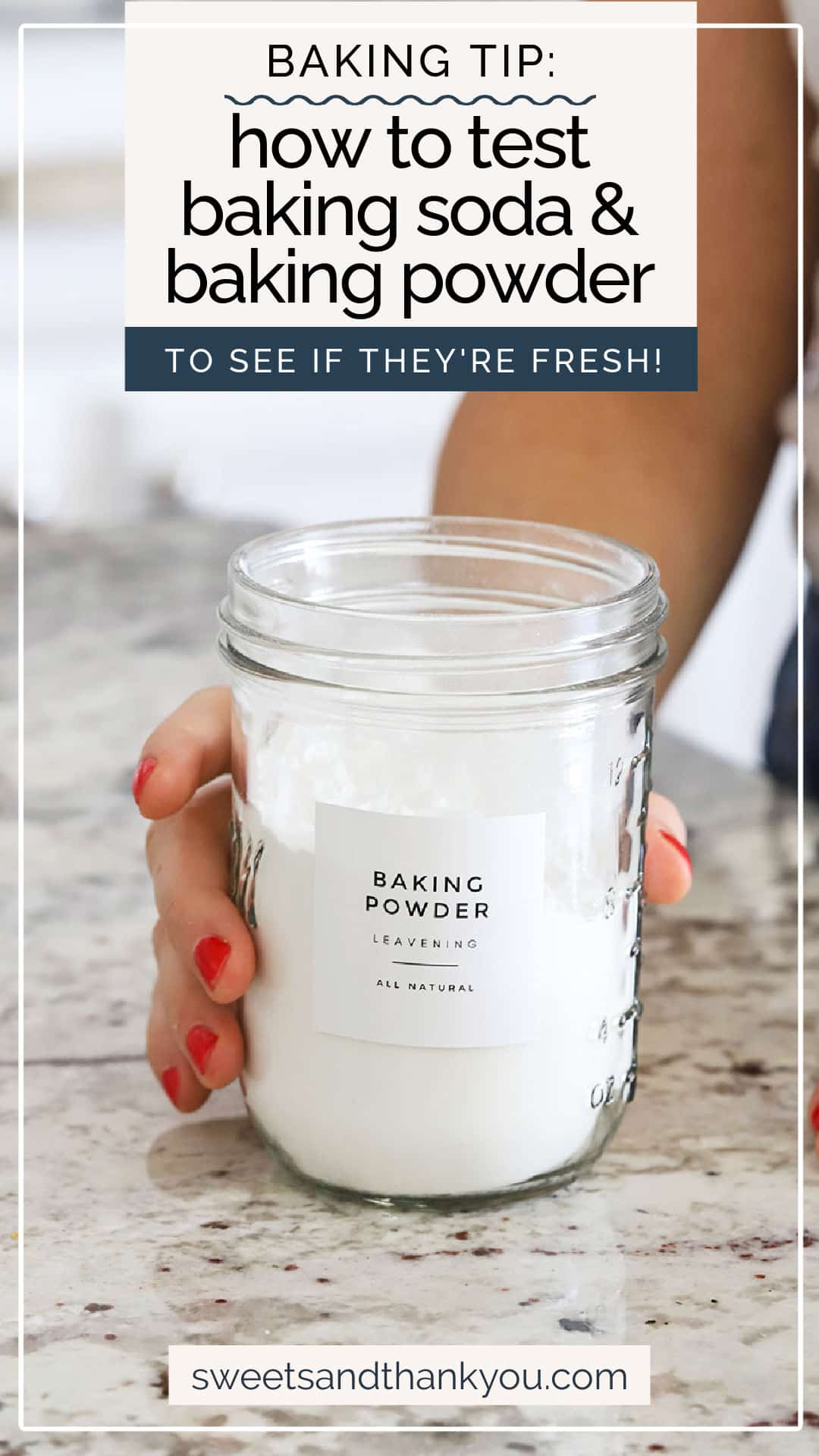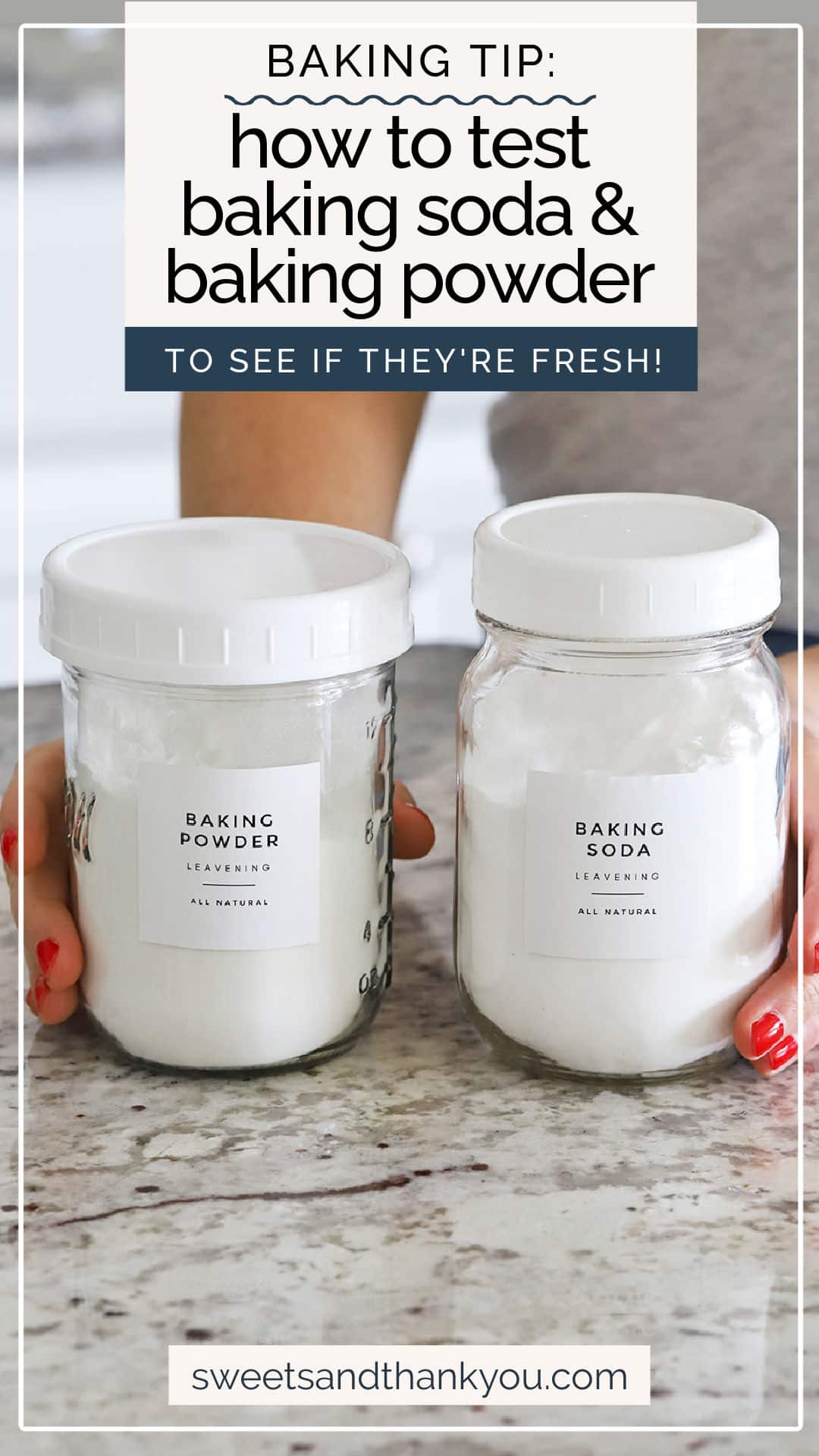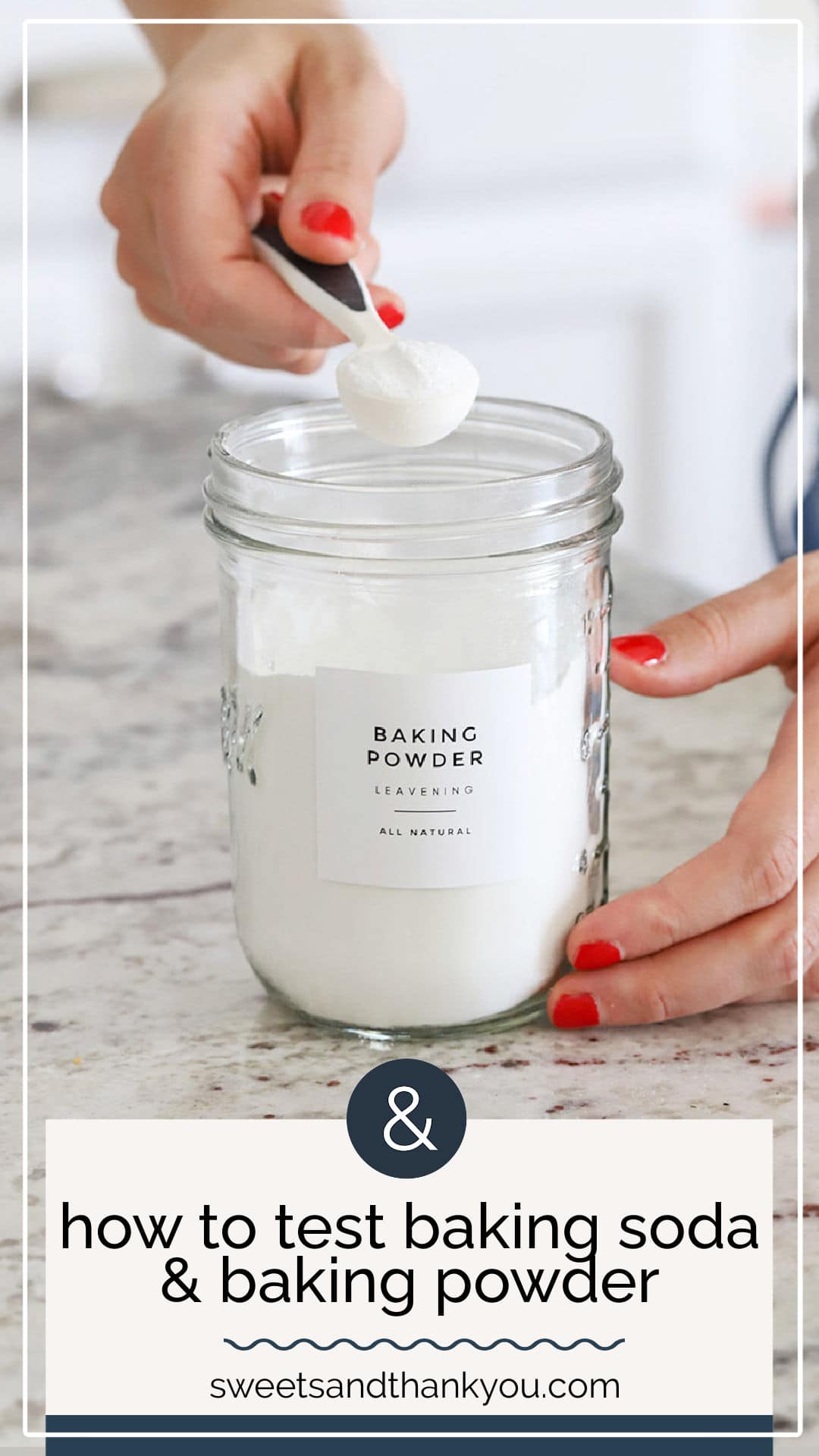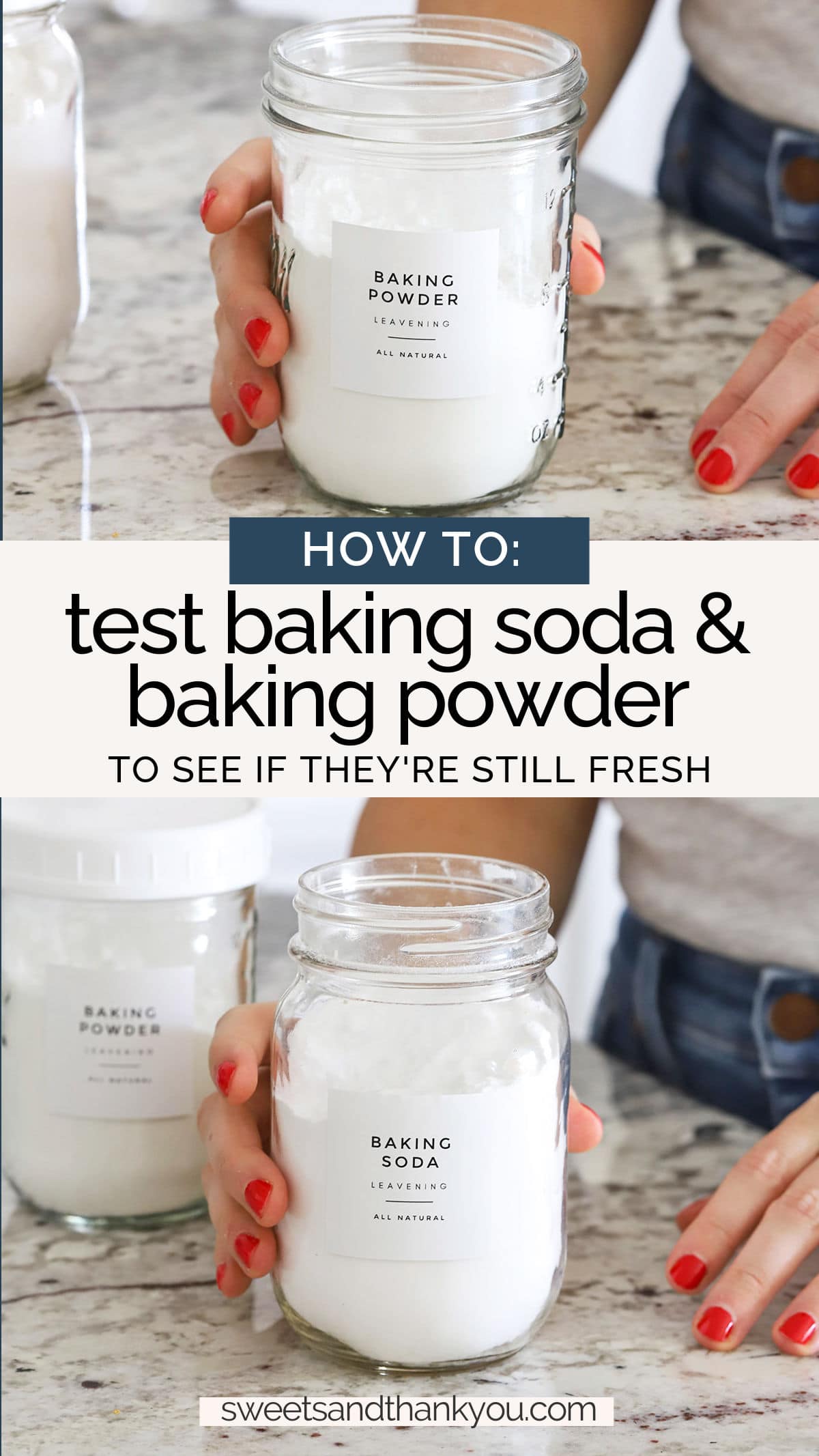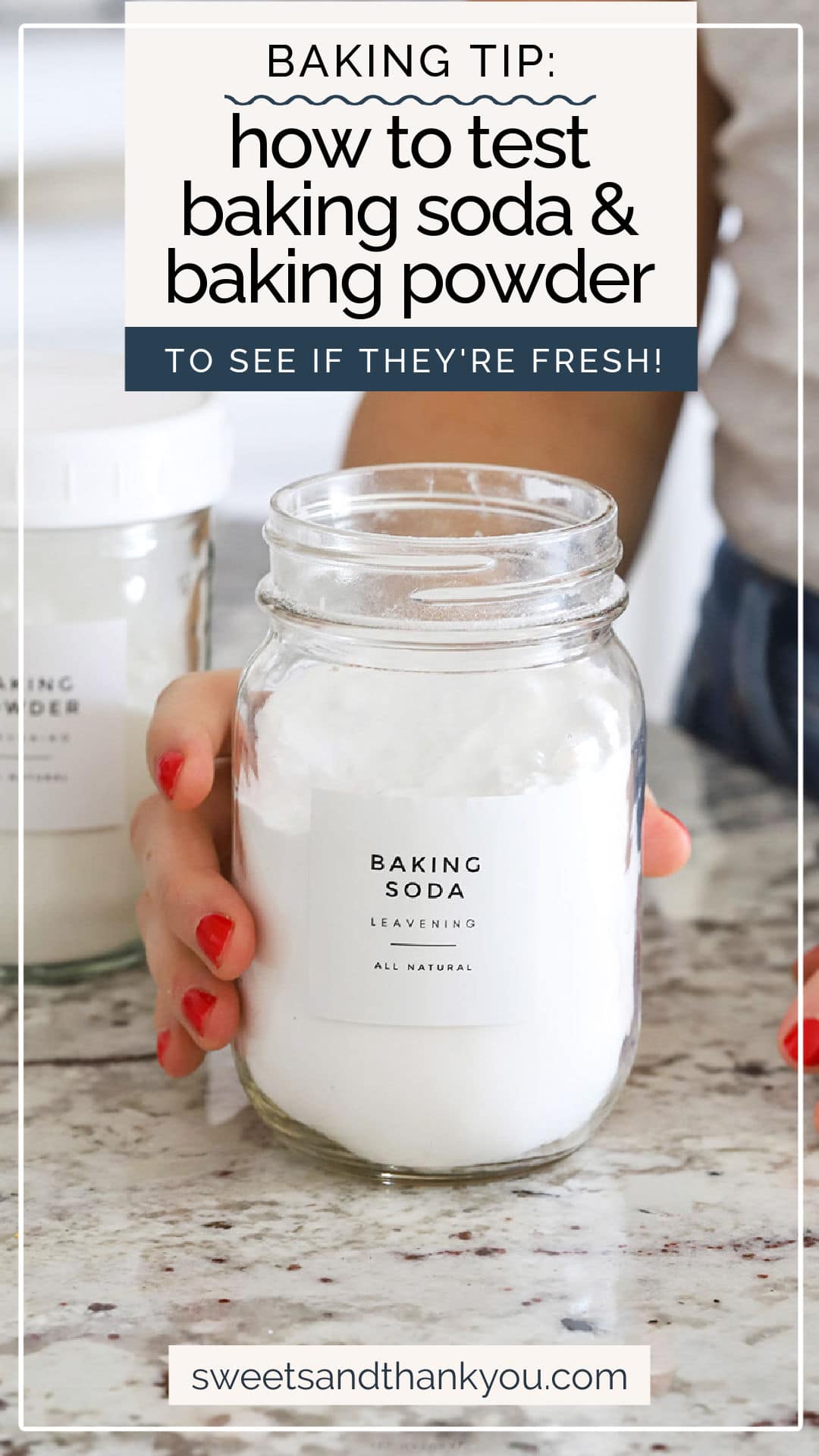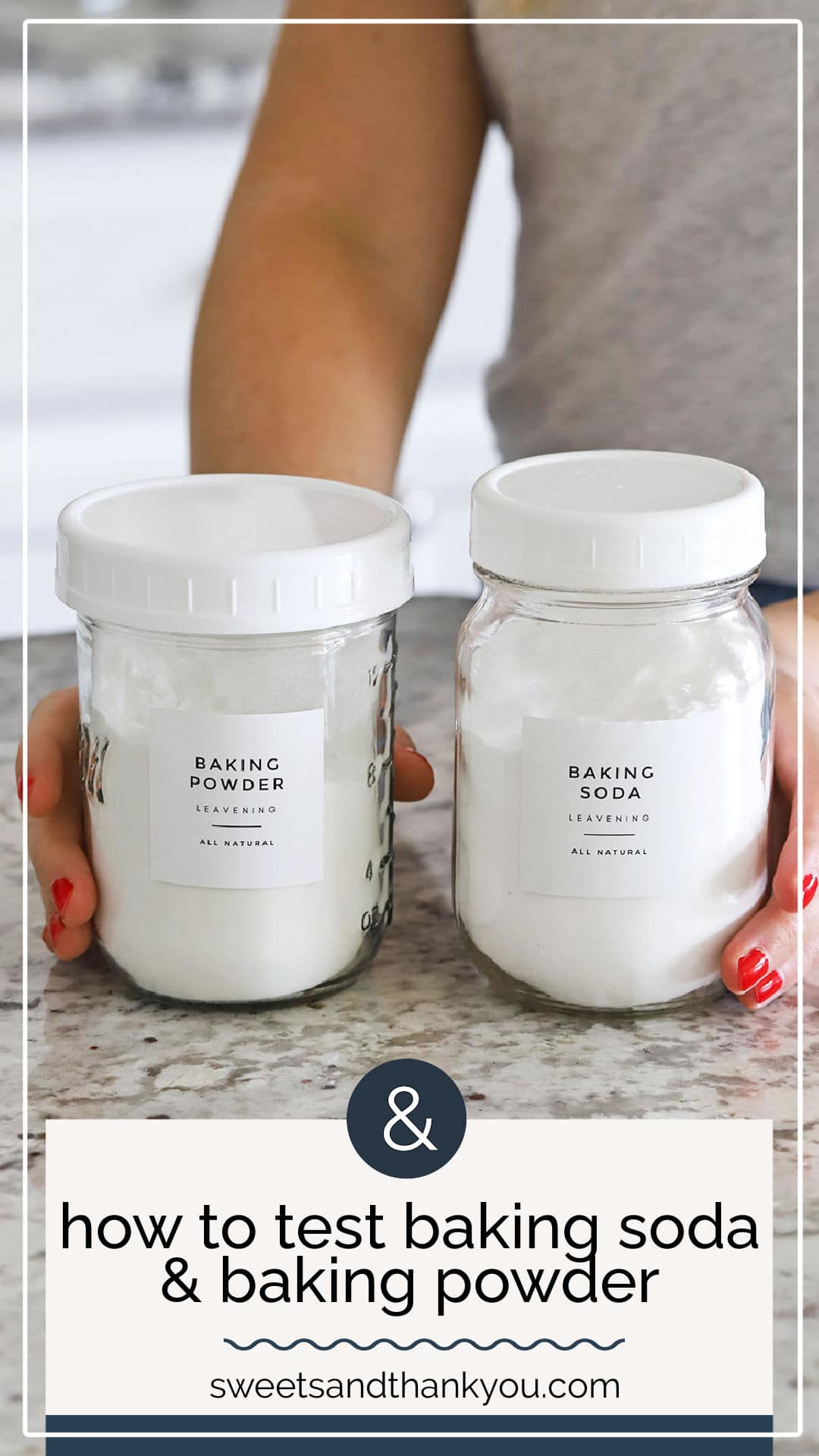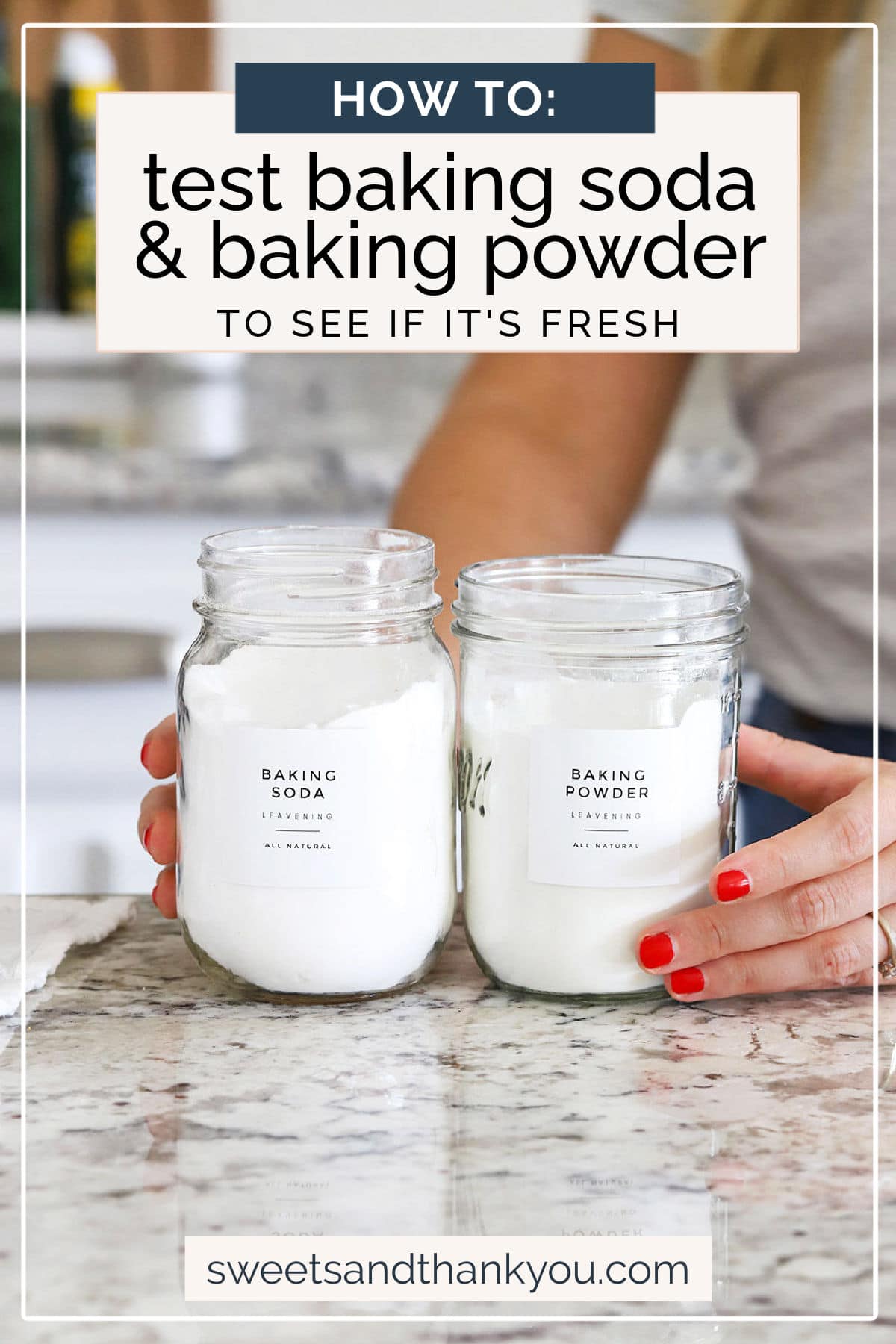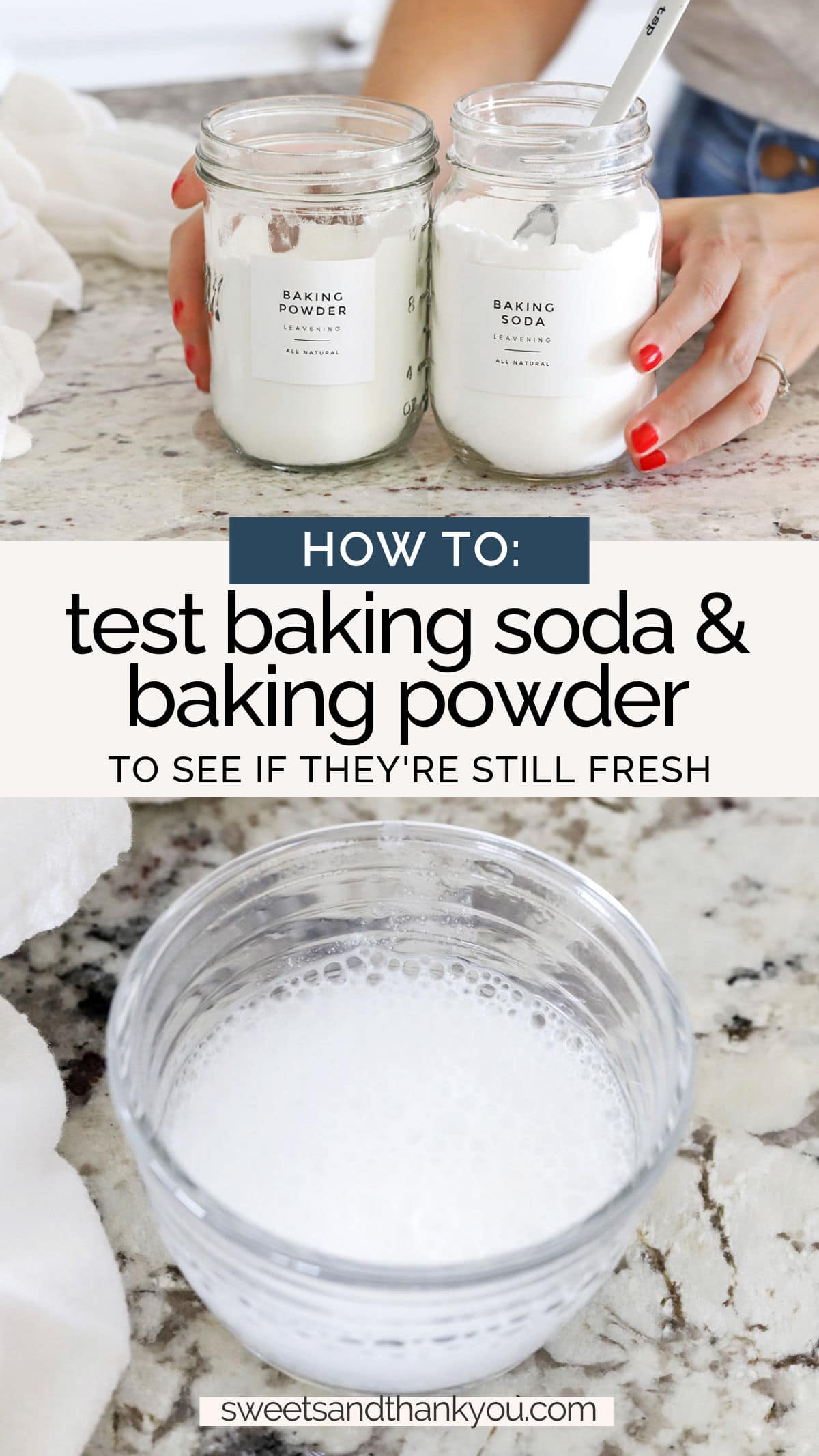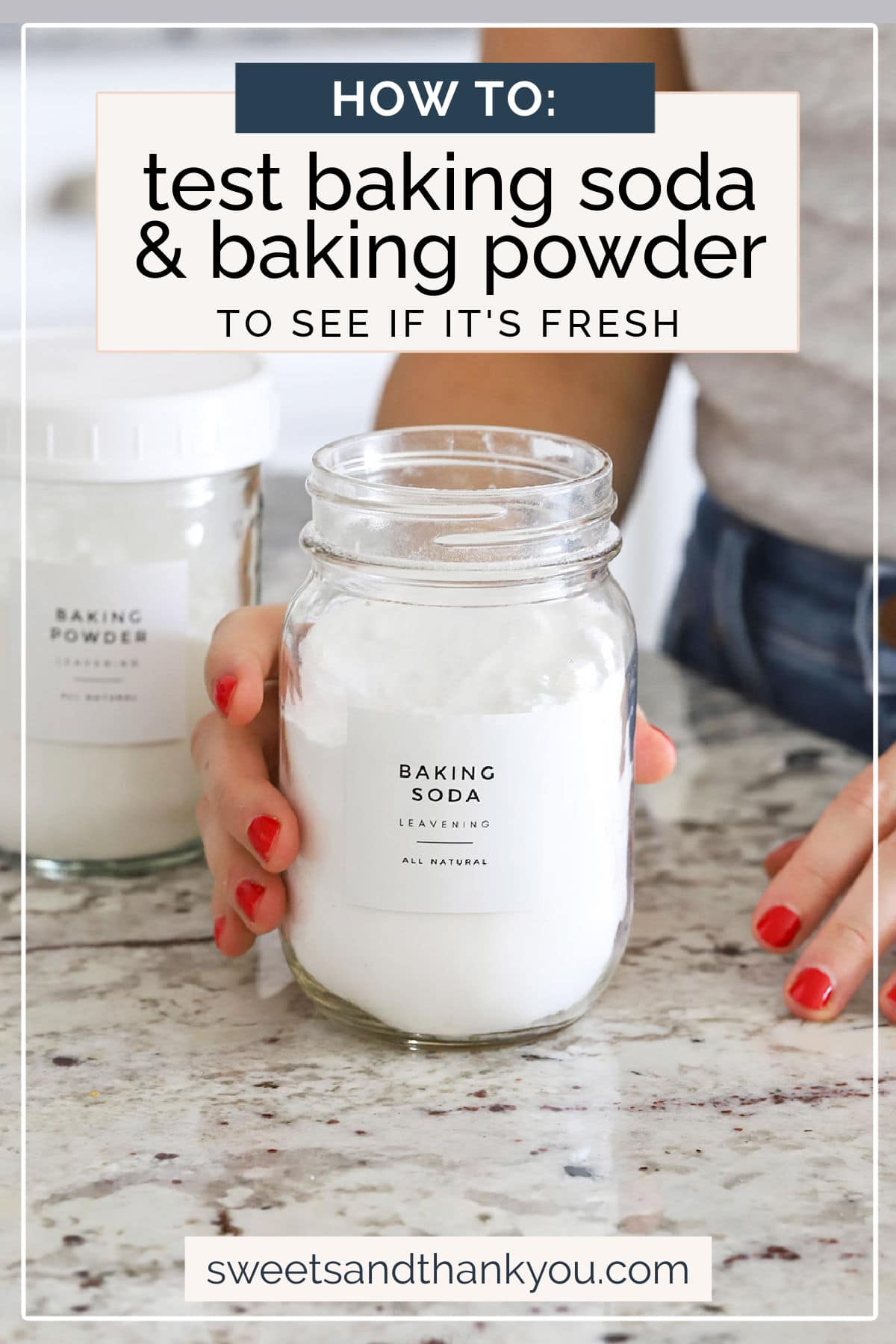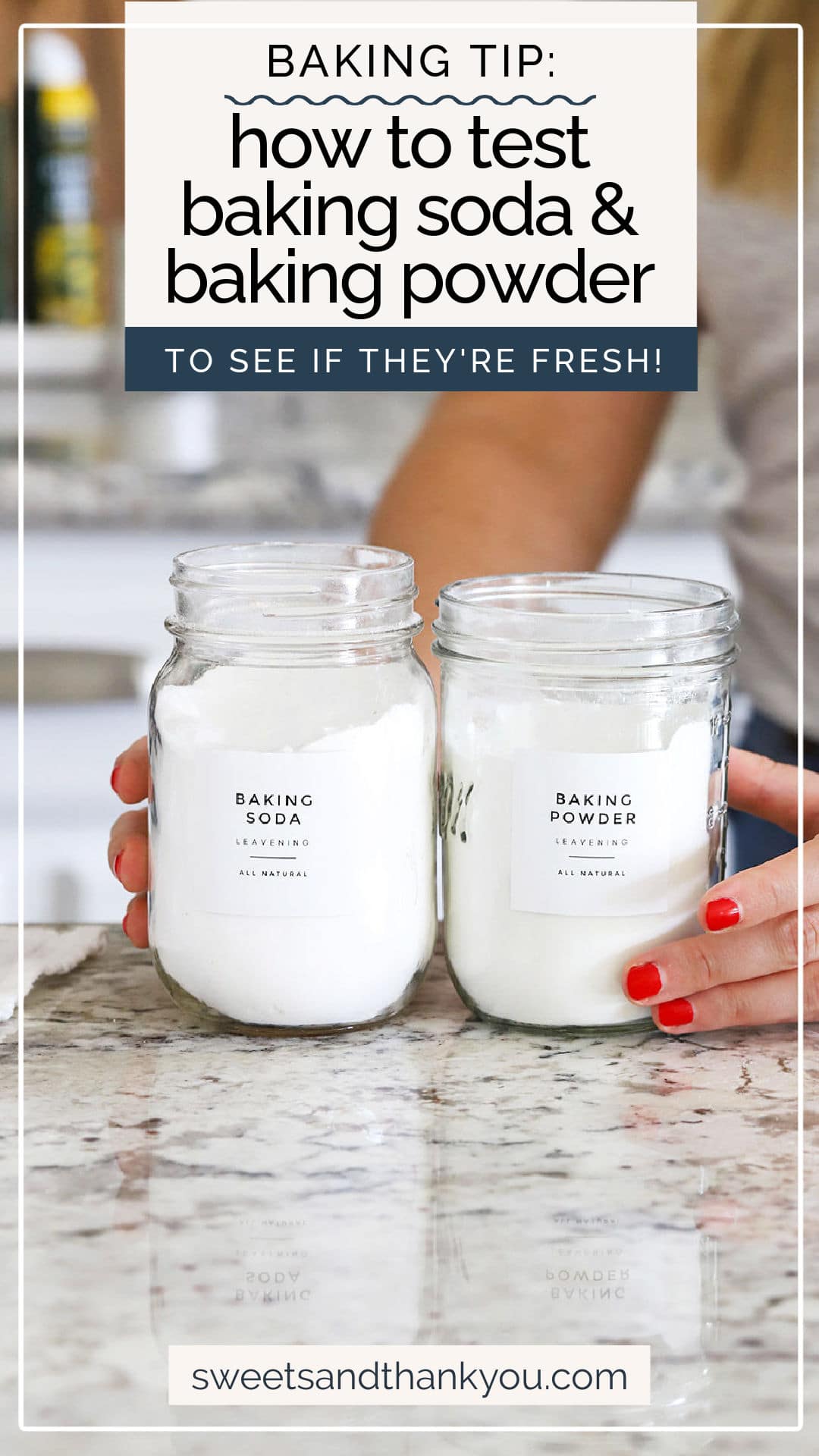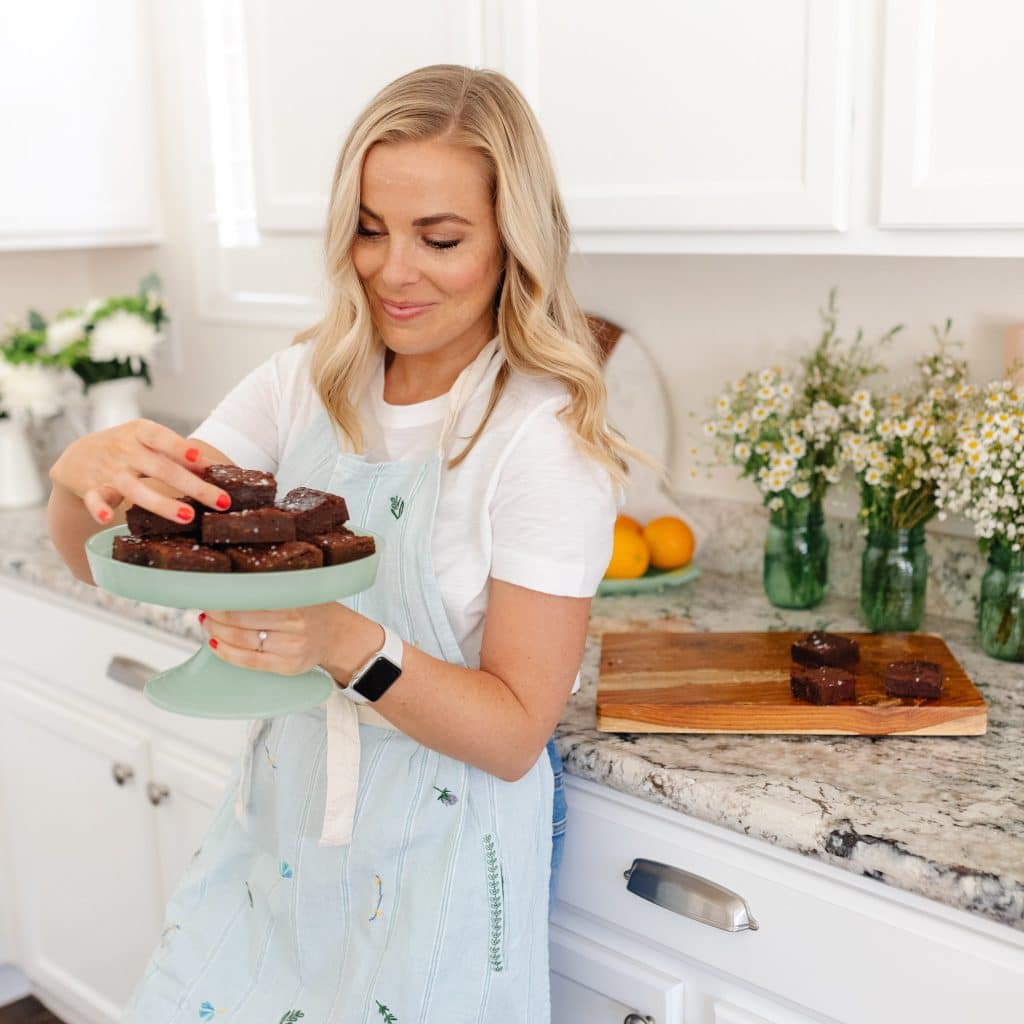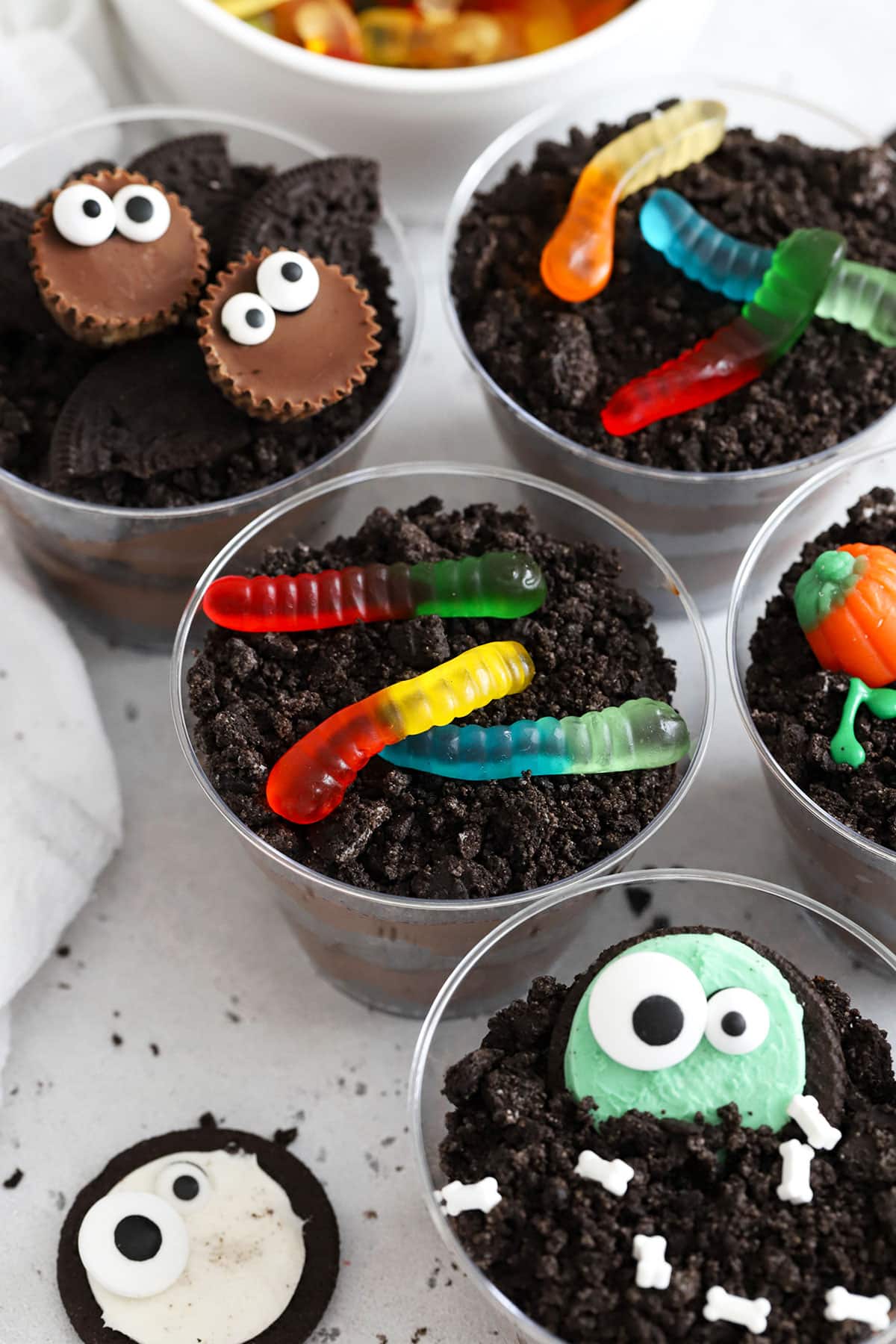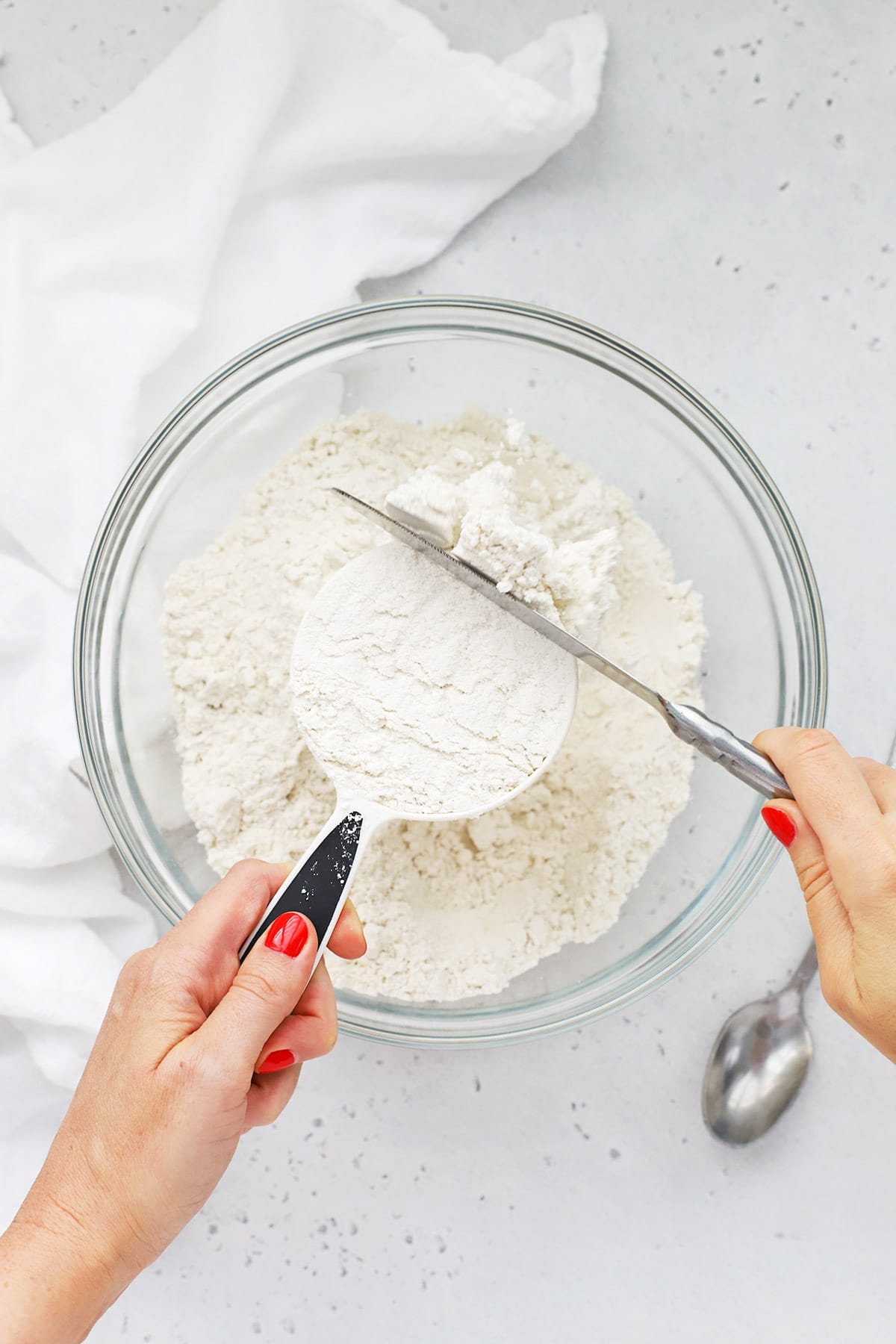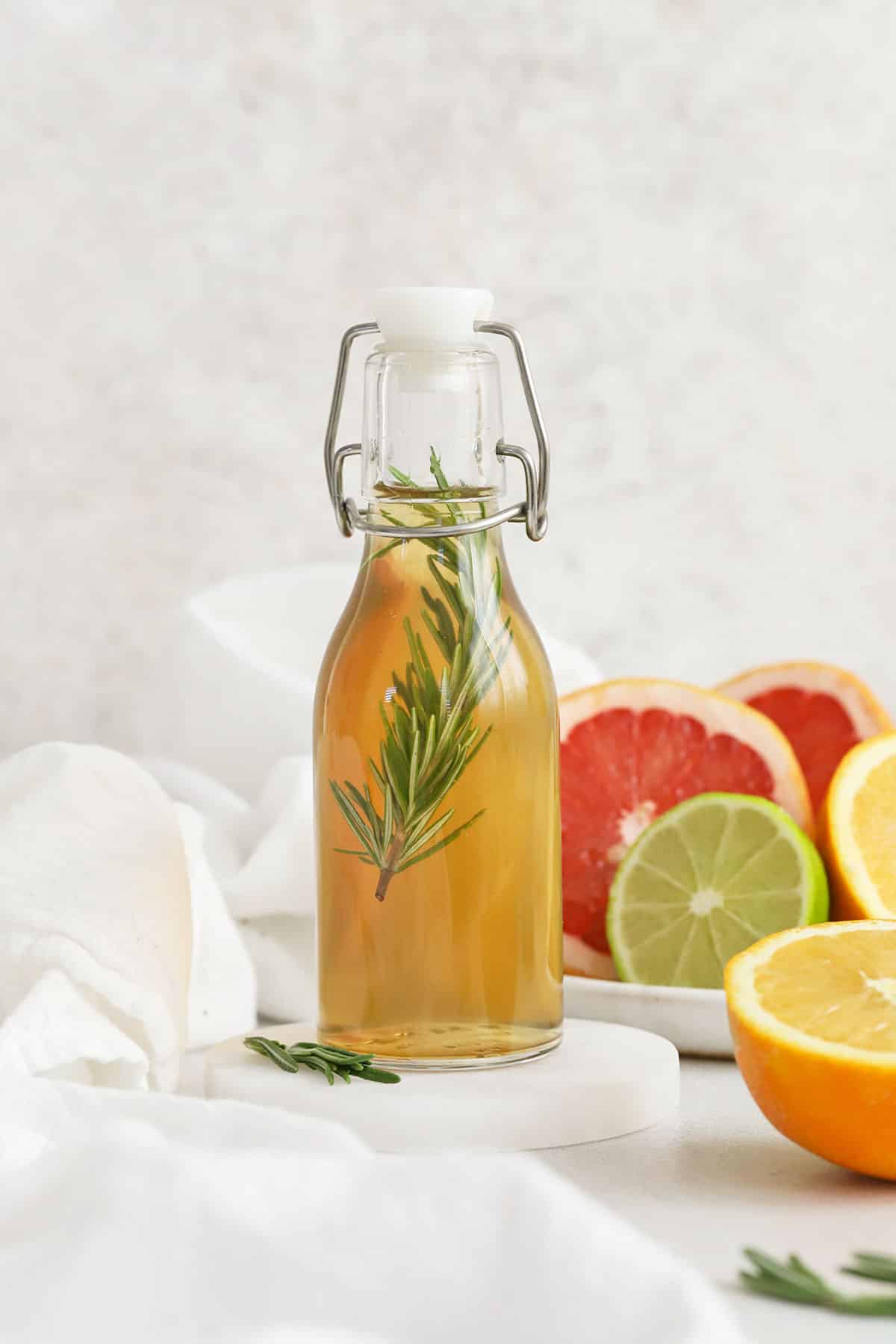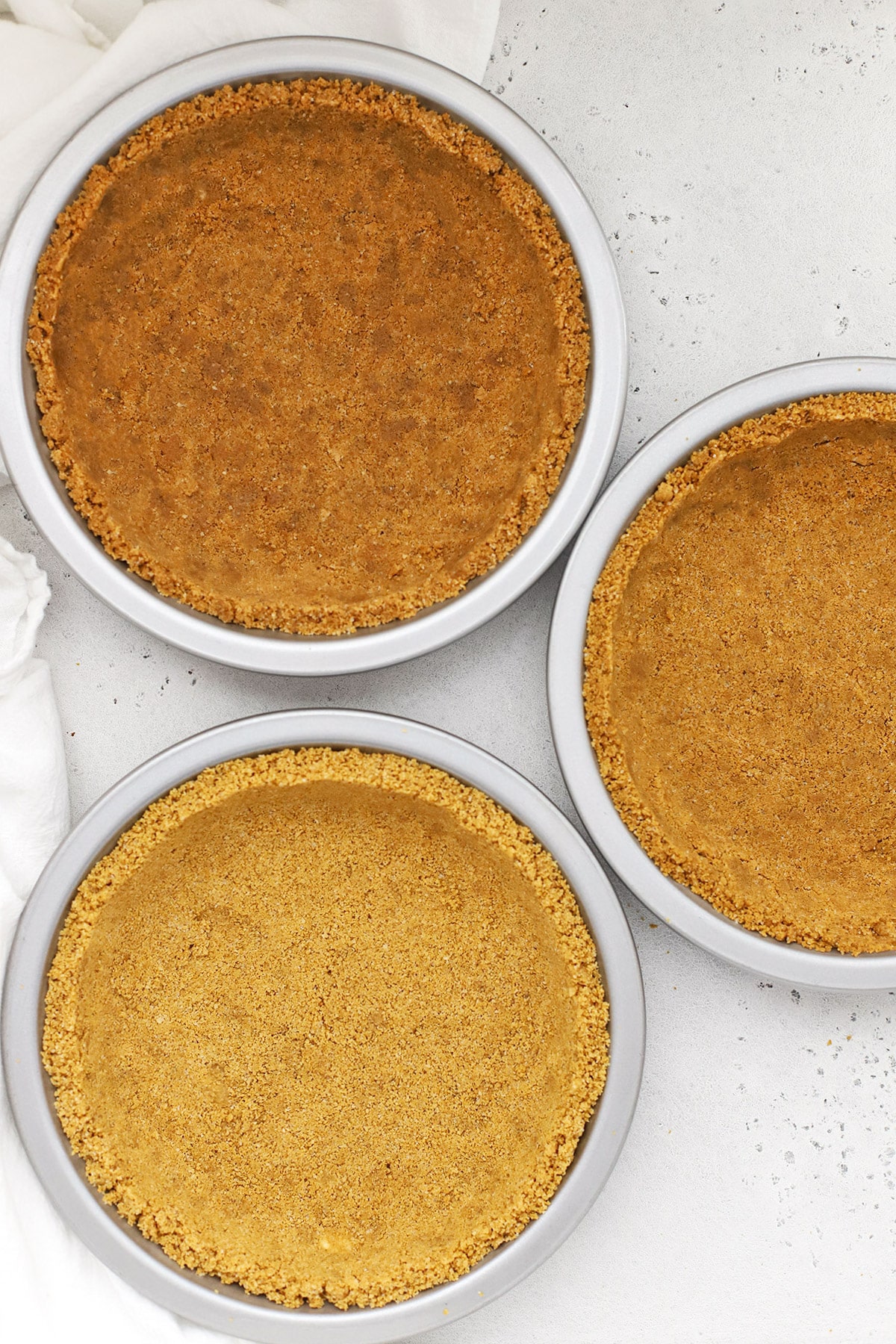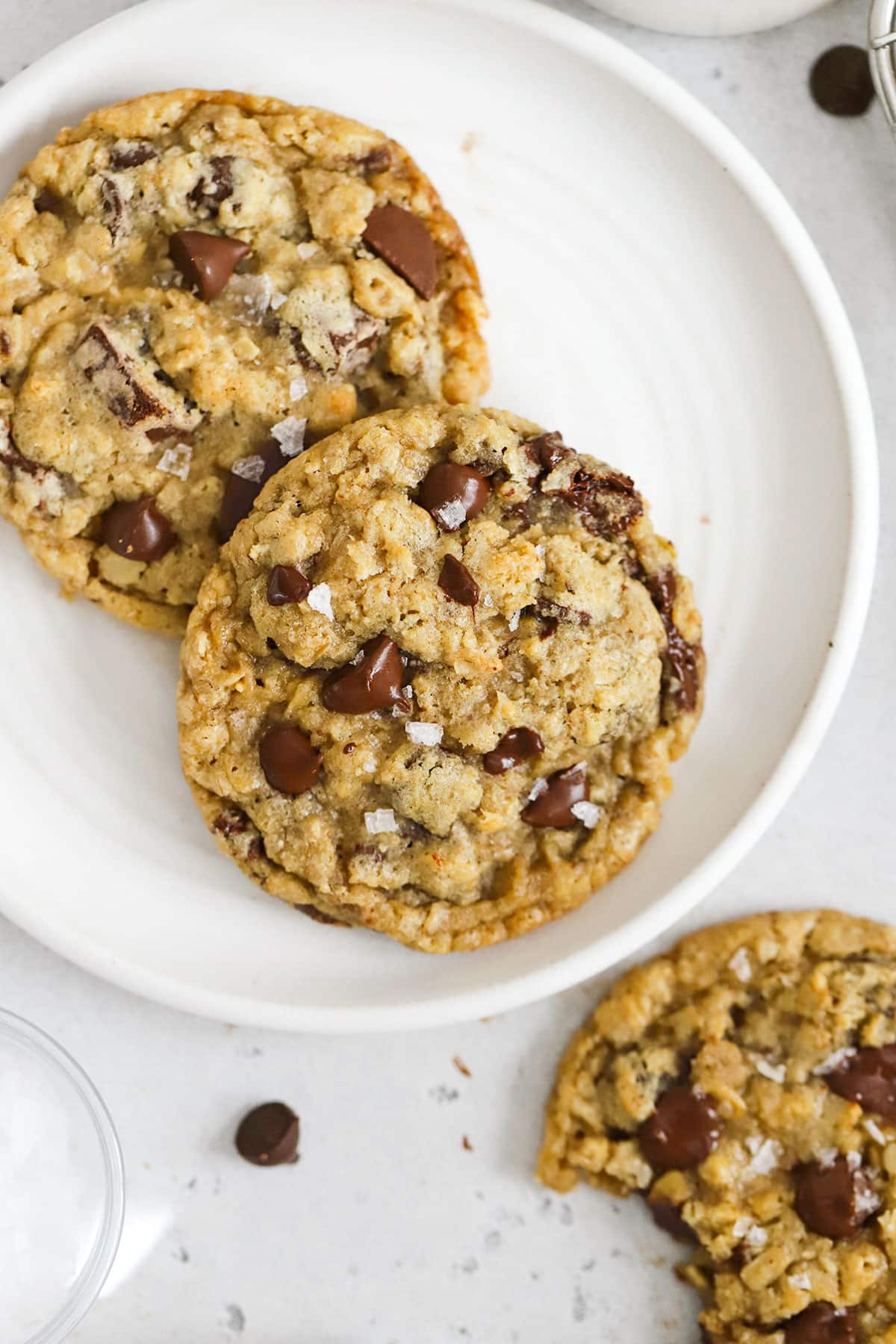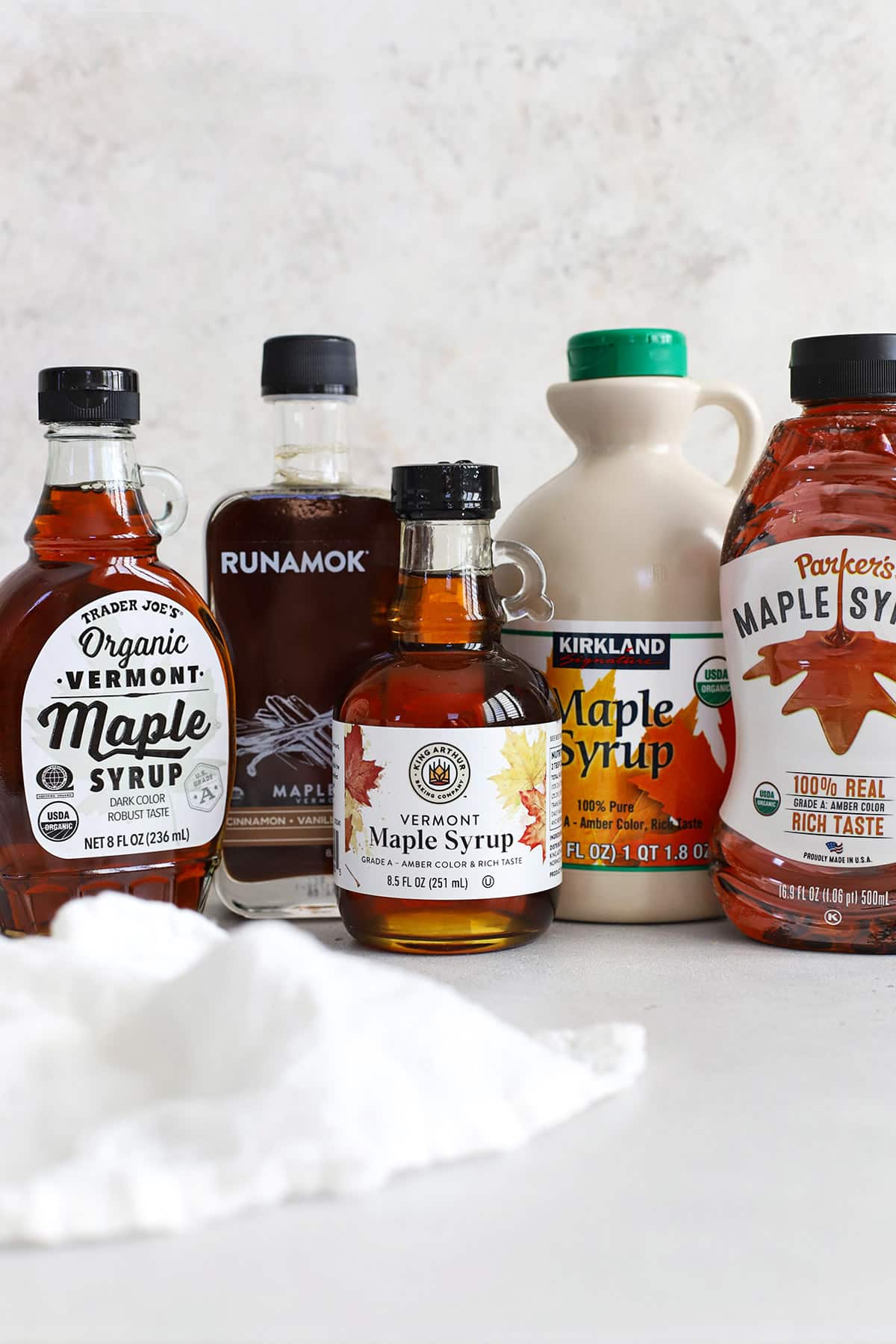How To Tell If Baking Powder & Baking Soda Are Fresh
This post may contain affiliate links. See our disclosure policy for more.
Ever wondered if your baking powder or baking soda is still good? Learn how to test your baking soda & baking powder freshness with these quick tips!
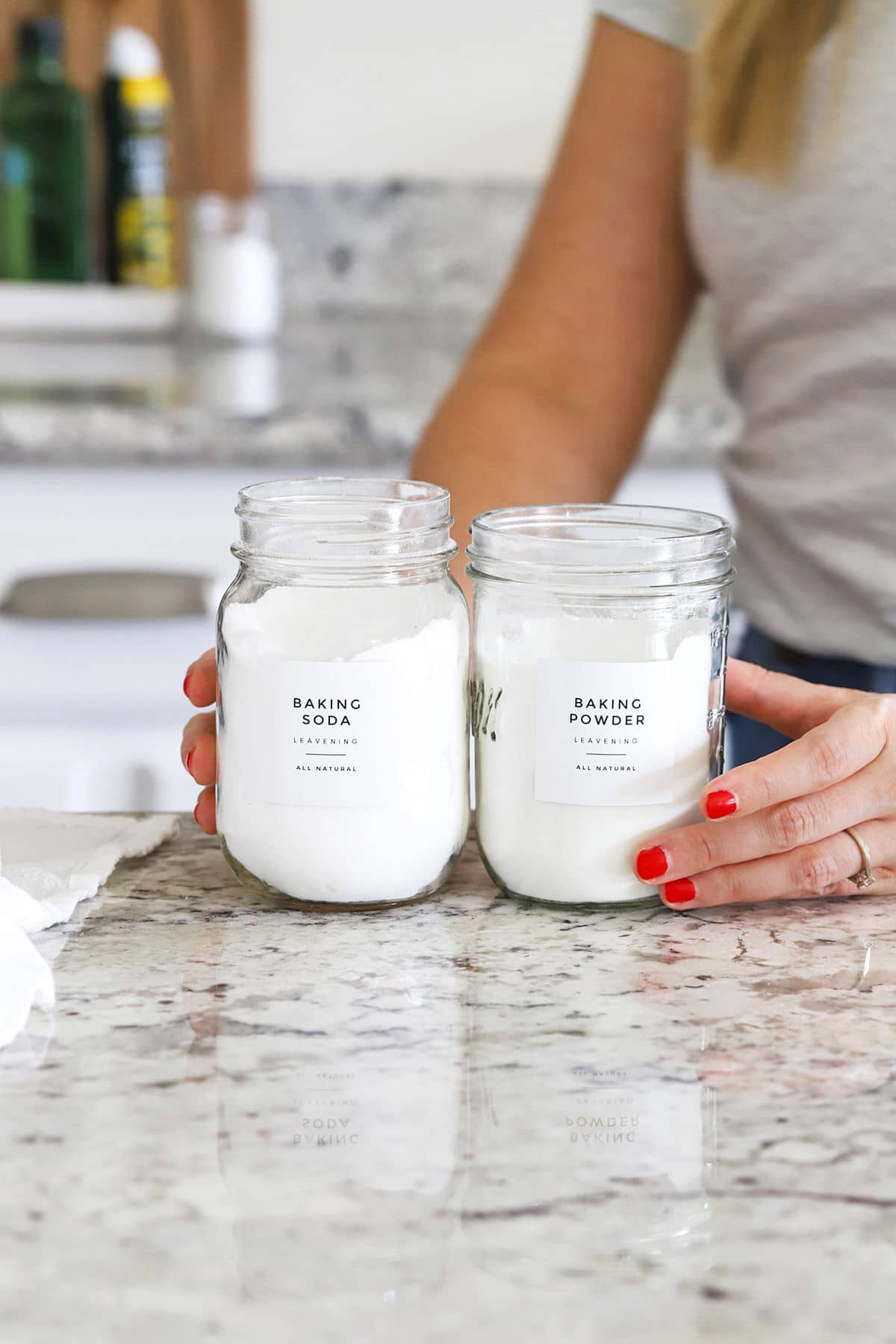
Welcome back to another quick tip in our Sweets & Thank You Be A Better Baker series, where we feature tips, tricks, and tutorials to help you improve (or brush up on!) your baking skills.
Today’s tip is a quick win that can make a HUGE difference in your baking–How to tell if baking soda and baking powder are fresh!
Since they won’t visibly show signs of their age (no mold, color change, or “off” smell), it can be tough to tell if your baking powder and baking soda are still fresh. Baking soda and baking powder won’t spoil (again, no visible signs of decay), but they WILL lose efficacy over time.
Using inactive, ineffective, or expired baking powder and baking soda can cause your baked goods not to rise, puff, or spread correctly. It’s critical to use fresh baking powder and fresh baking soda for the best results in your cookies, cakes, and bakes.
Here’s everything you need to know & how test them in seconds!
This Quick Baking Tip, At A Glance:
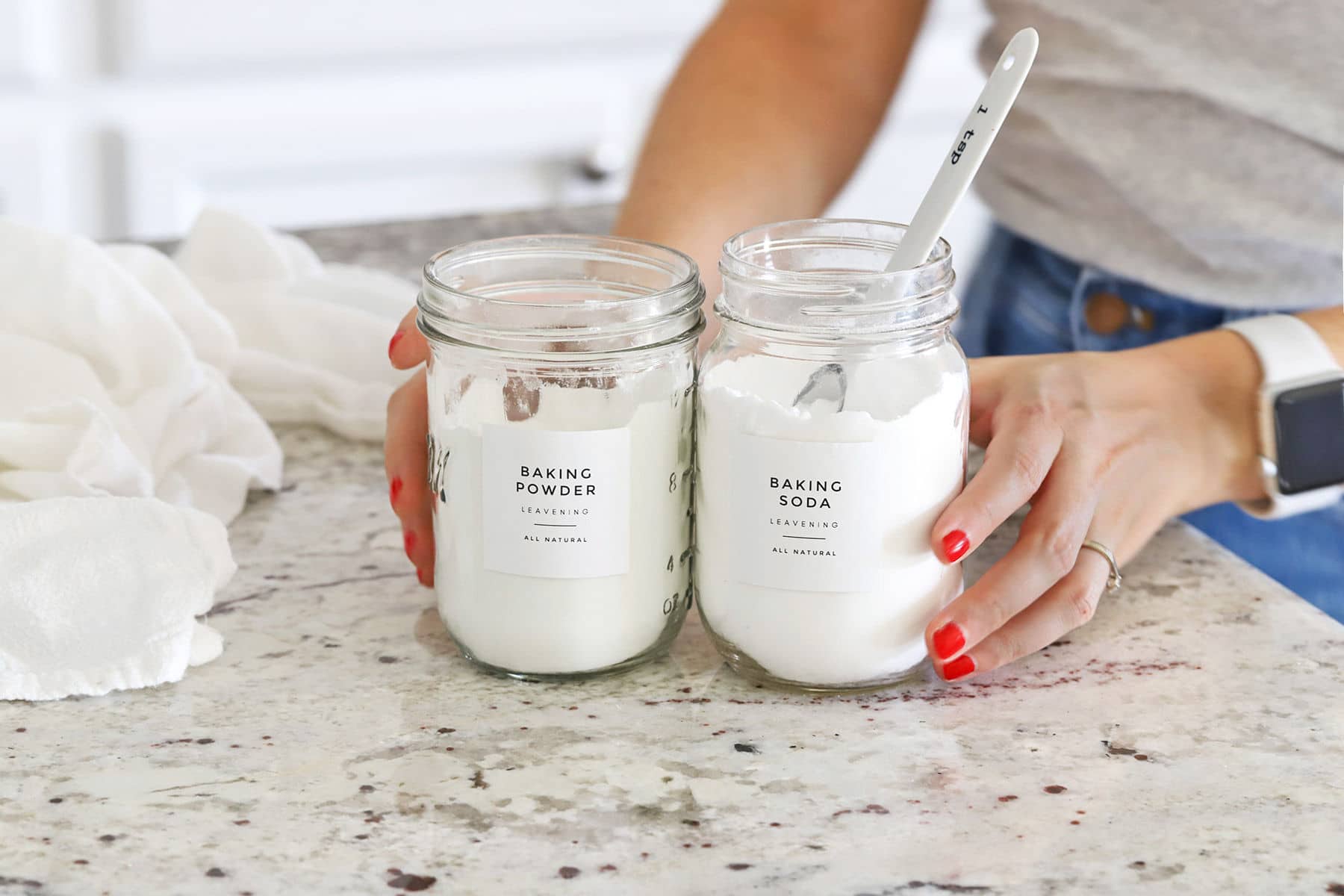
What’s The Difference Between Baking Soda & Baking Powder?
One quick adage is “baking soda spreads + baking powder puffs.” Each of these leavening agents reacts differently in your recipes. Let’s take a look at each one:
Baking Soda
Baking soda, also known as sodium bicarbonate or bicarbonate of soda is a a leavening agent that’s a base. Just like in chemistry class, a base requires and acid to react with it. (Picture the fizzing reaction of baking soda + vinegar volcanoes!) When baking soda combines with an acid, it reacts, creating carbon dioxide, which helps your baked goods rise.
The same activating reaction happens in baking when baking soda (a base) is combined with acid ingredients, like lemon juice, buttermilk, brown sugar, molasses, yogurt, unsweetened cocoa powder, applesauce, sour cream, etc. The acid in the ingredients neutralizes the base in the baking soda, which helps baked goods rise/spread properly and keeps the flavor right where you want it.
It’s important to use just enough baking soda. Using too little will give an insufficient reaction, while too much can make your baked goods taste soapy or metallic. Similarly, if you don’t include acidic ingredients in a recipe with baking soda, it can taste soapy/metallic.
Baking Powder
Baking Powder is made from baking soda (a base) & cream of tartar (an acid), and sometimes cornstarch or arrowroot. Since it already has both an acid + a base, baking powder reacts when exposed to wet ingredients or when it’s heated.
Most baking powder in the U.S. these days is double-acting baking powder. This means it’s activated twice–first when mixed with wet ingredients in dough or batter, and second when heated in the oven. The baking soda in baking powder can react with acidic ingredients, while the cream of tarter adds some tang and helps baked goods puff.
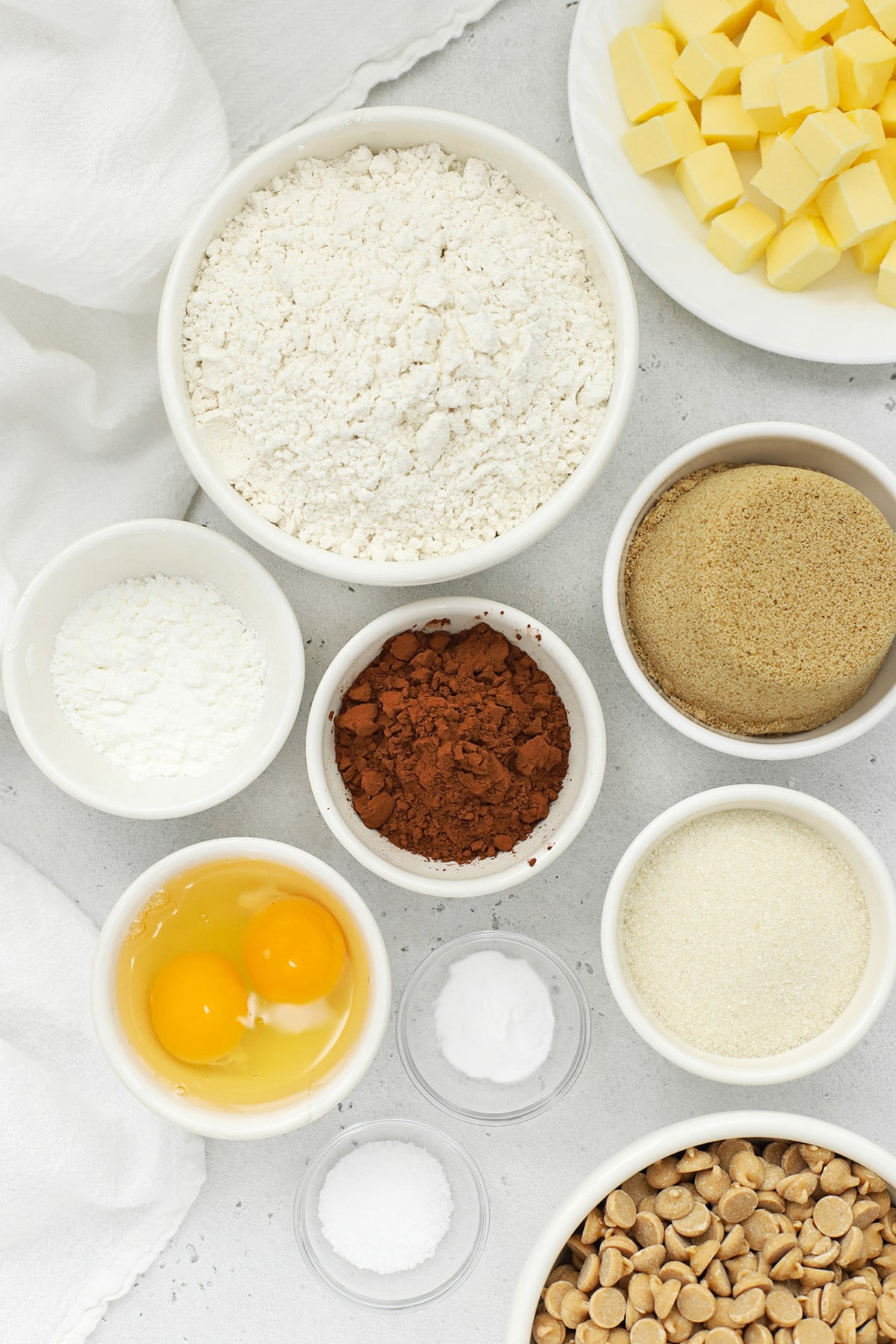
How Long Do Baking Soda & Baking Powder Stay Fresh?
So, what’s the shelf life of baking powder? How long does baking soda stay fresh?
- Baking Soda stays fresh for about 6 months once it’s been opened. Unopened, baking soda can stay fresh up to 3 years!
- Baking Powder also stays fresh for about 6 months once it’s been opened. Unopened, baking powder typically lasts 6-12 months.
How Often Should You Replace Baking Soda & Baking Powder? I recommend checking your baking soda and baking powder once you hit the 3 month mark. Different conditions in your home (light, heat, humidity, etc.) can impact the shelf life of baking powder or baking soda.
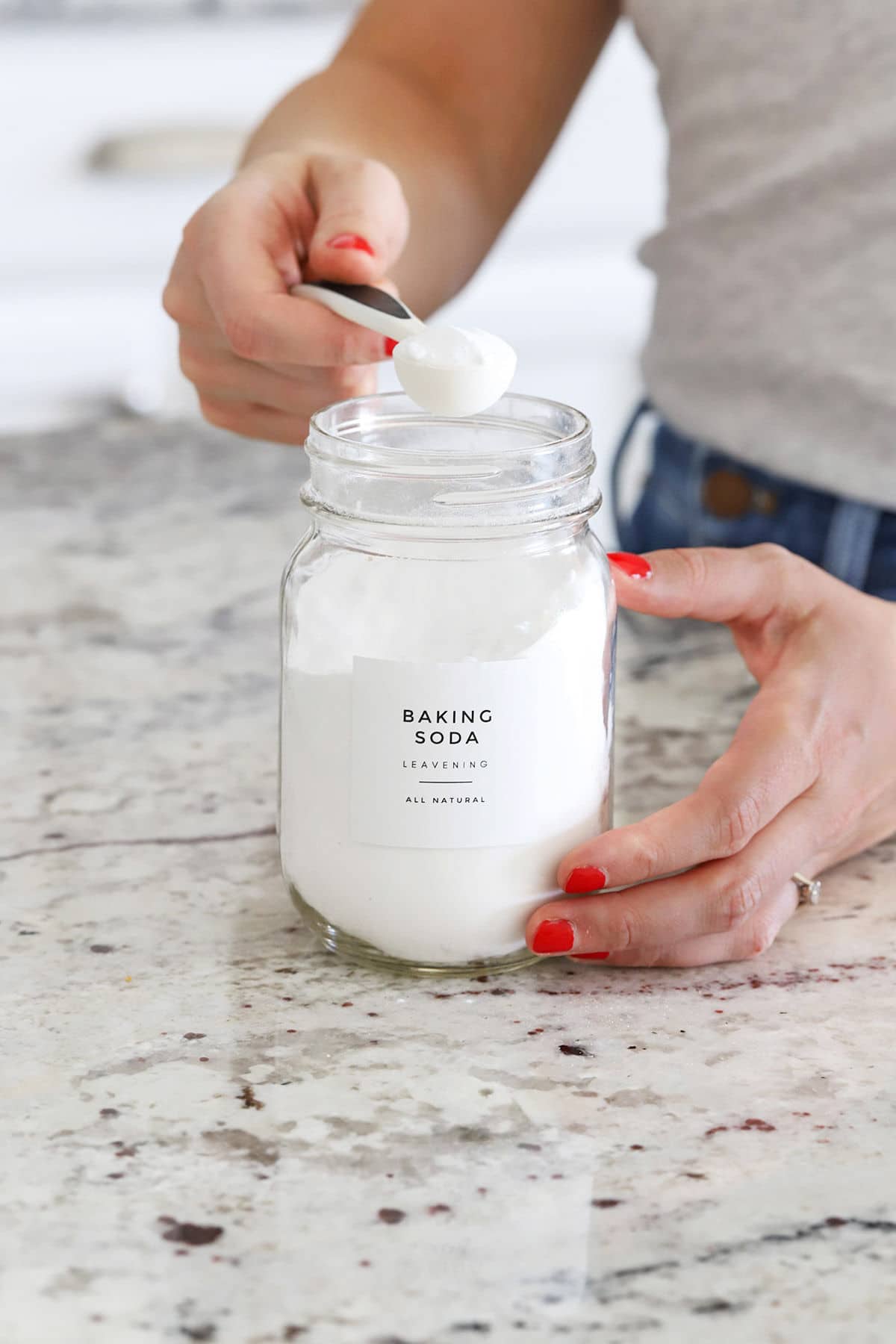
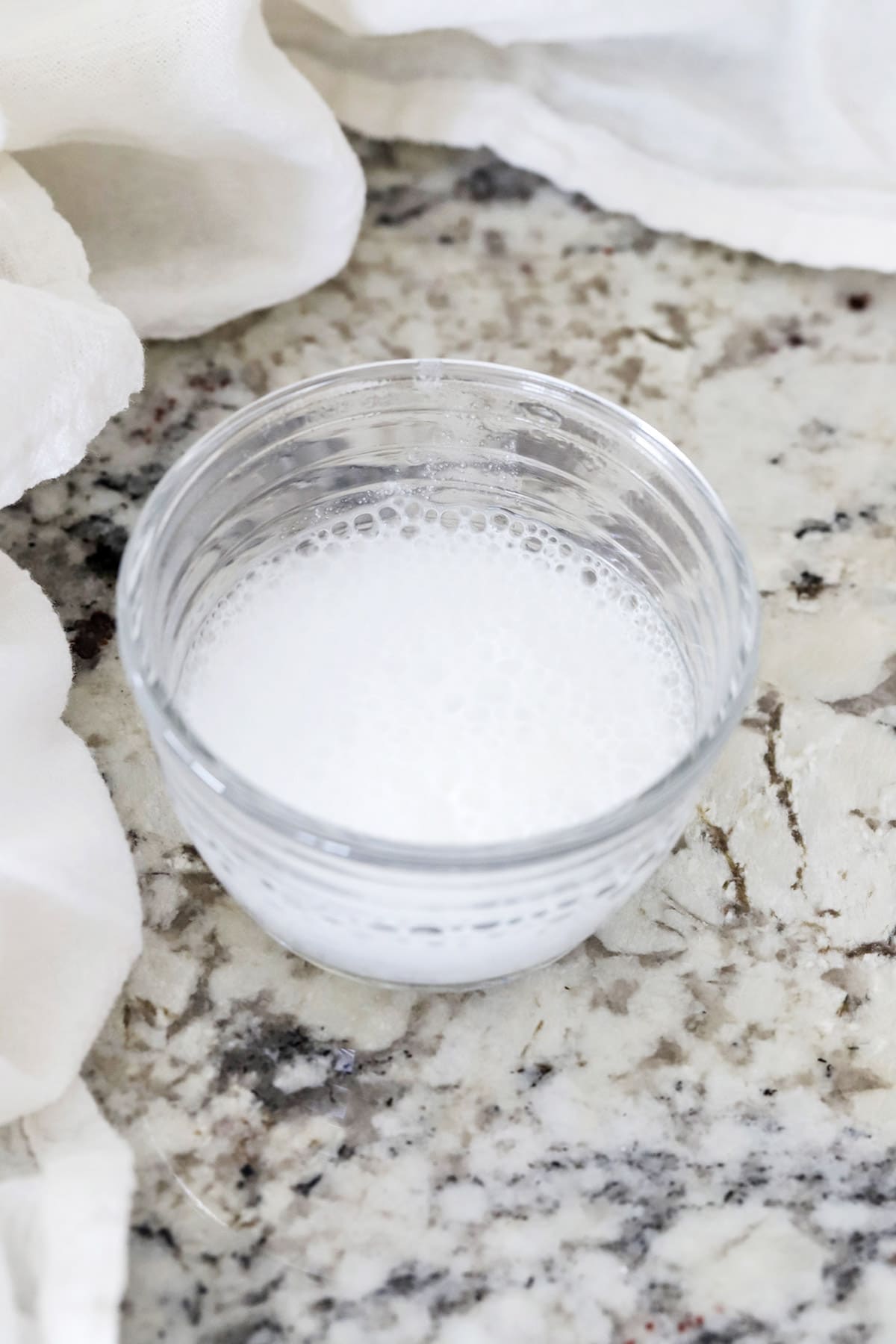
How To Tell If Baking Soda Is Still Good
So, how do we test if baking soda is fresh or if it’s expired? To test if your baking soda is expired, you’ll use the vinegar test:
- Place 1 Tbsp. vinegar in a medium bowl.
- Add 1/4 tsp. baking soda and watch for a reaction.
- If your baking soda is FRESH: it will immediately fizz and bubble vigorously (just like those volcano science experiments!)
- If the baking soda is EXPIRED or inactive, there will be minimal bubbling, a delayed response, or no bubbles at all. It should NOT be used for baking, as it won’t react in your recipes.
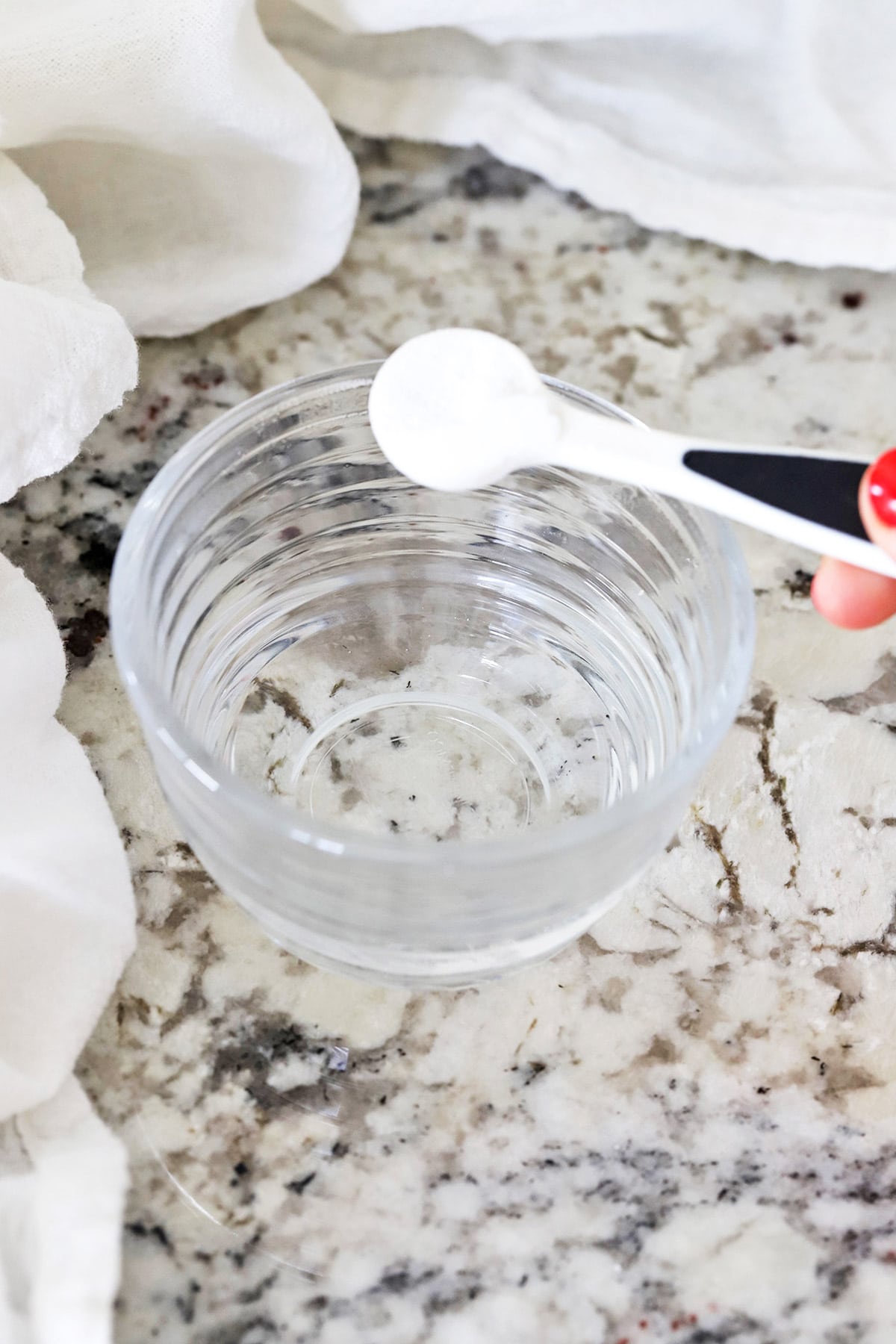
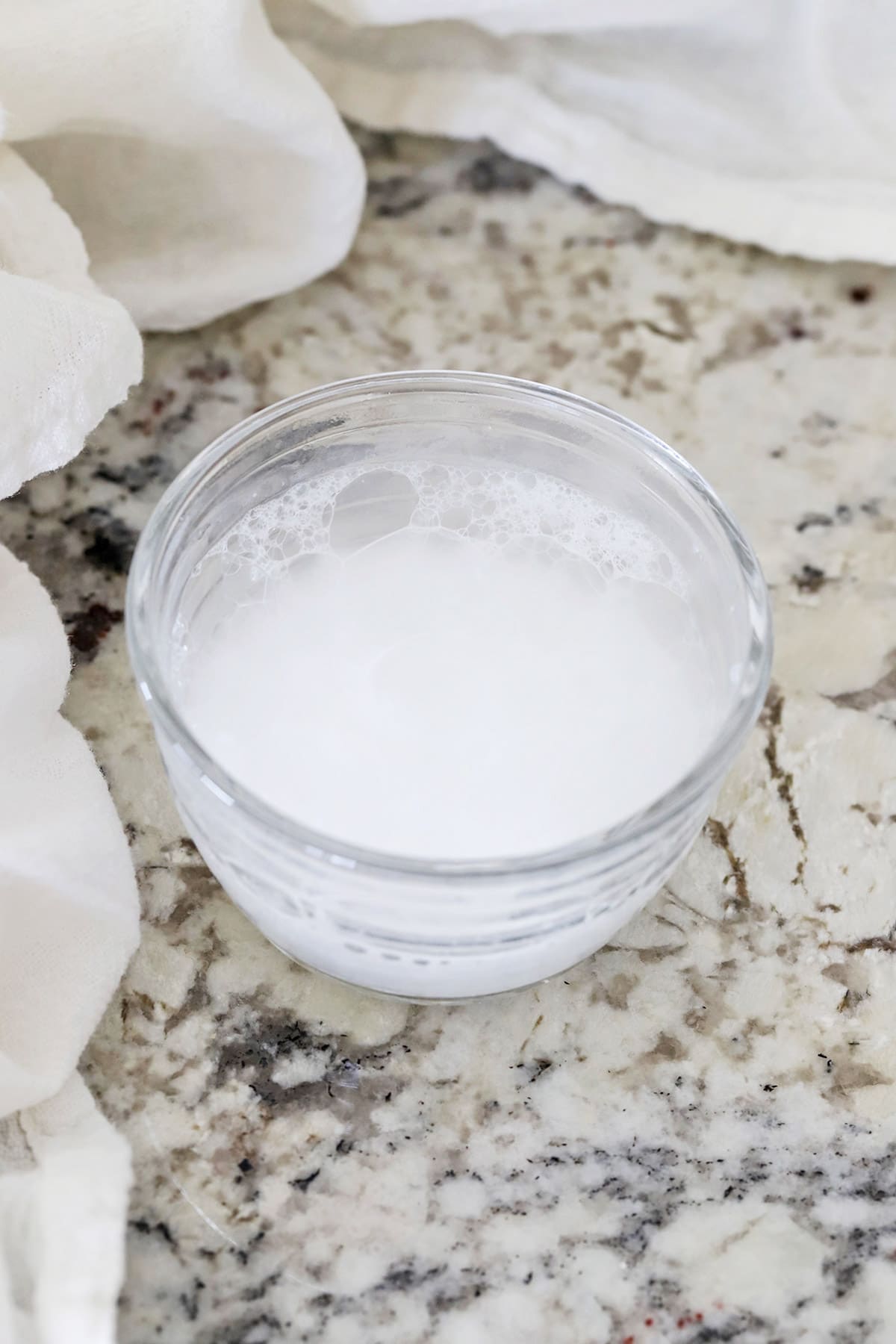
How To Tell If Baking Powder Is Still Good:
Now, let’s talk about how to tell if your baking powder is expired or still effective. With baking powder, you’ll test it in water rather than vinegar. Here’s how to test your baking powder, step by step:
- Place 1/4 cup warm water in a medium bowl.
- Add 1/2 tsp. baking powder to the warm water & watch for a reaction.
- If the baking powder is FRESH: It will immediately bubble and fizz vigorously.
- If the baking powder is EXPIRED: It will have a delayed or weak reaction, or simply dissolve or sink to the bottom of the water. If your baking powder is expired, you’ll need to throw it away, as it won’t react in your recipes.
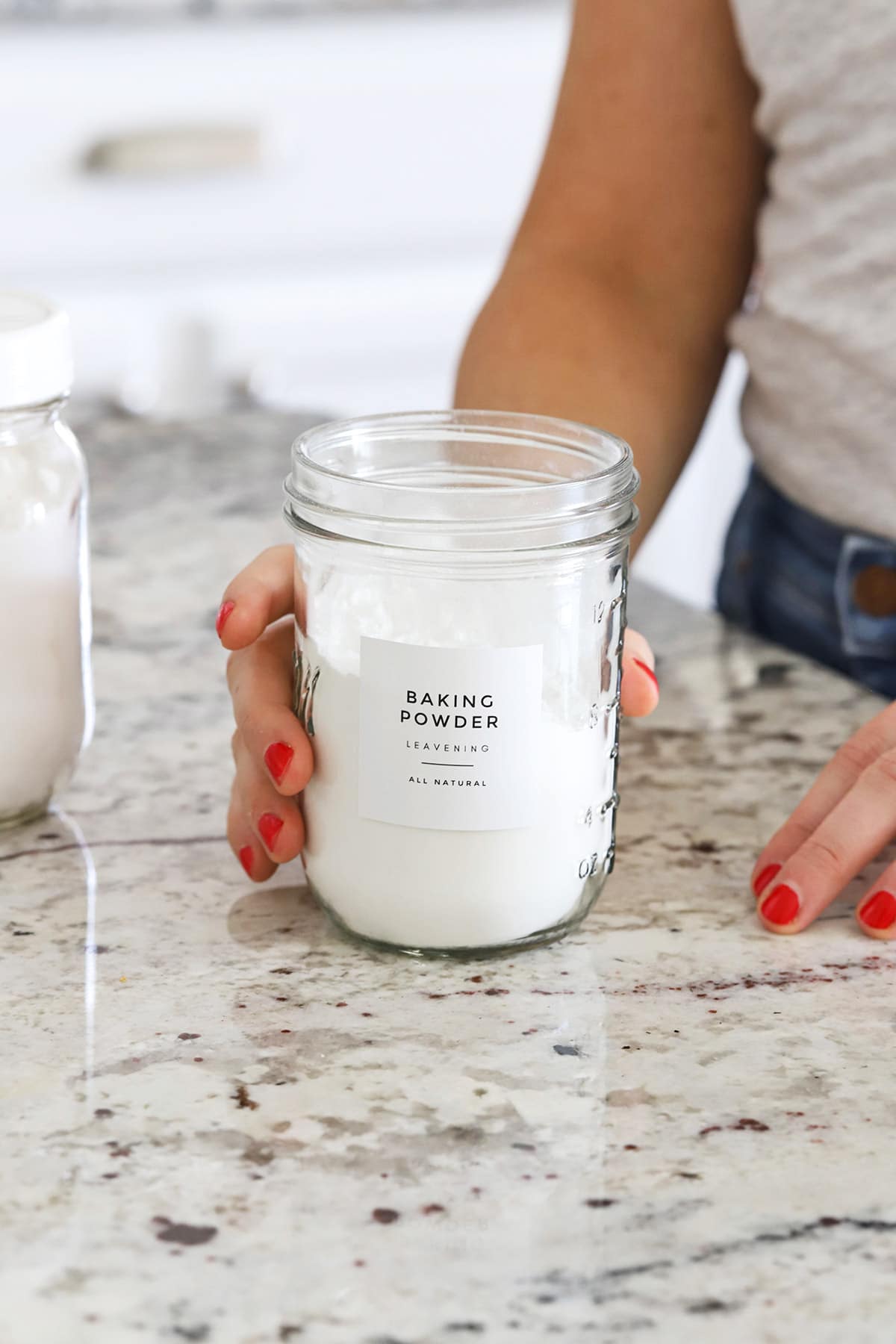
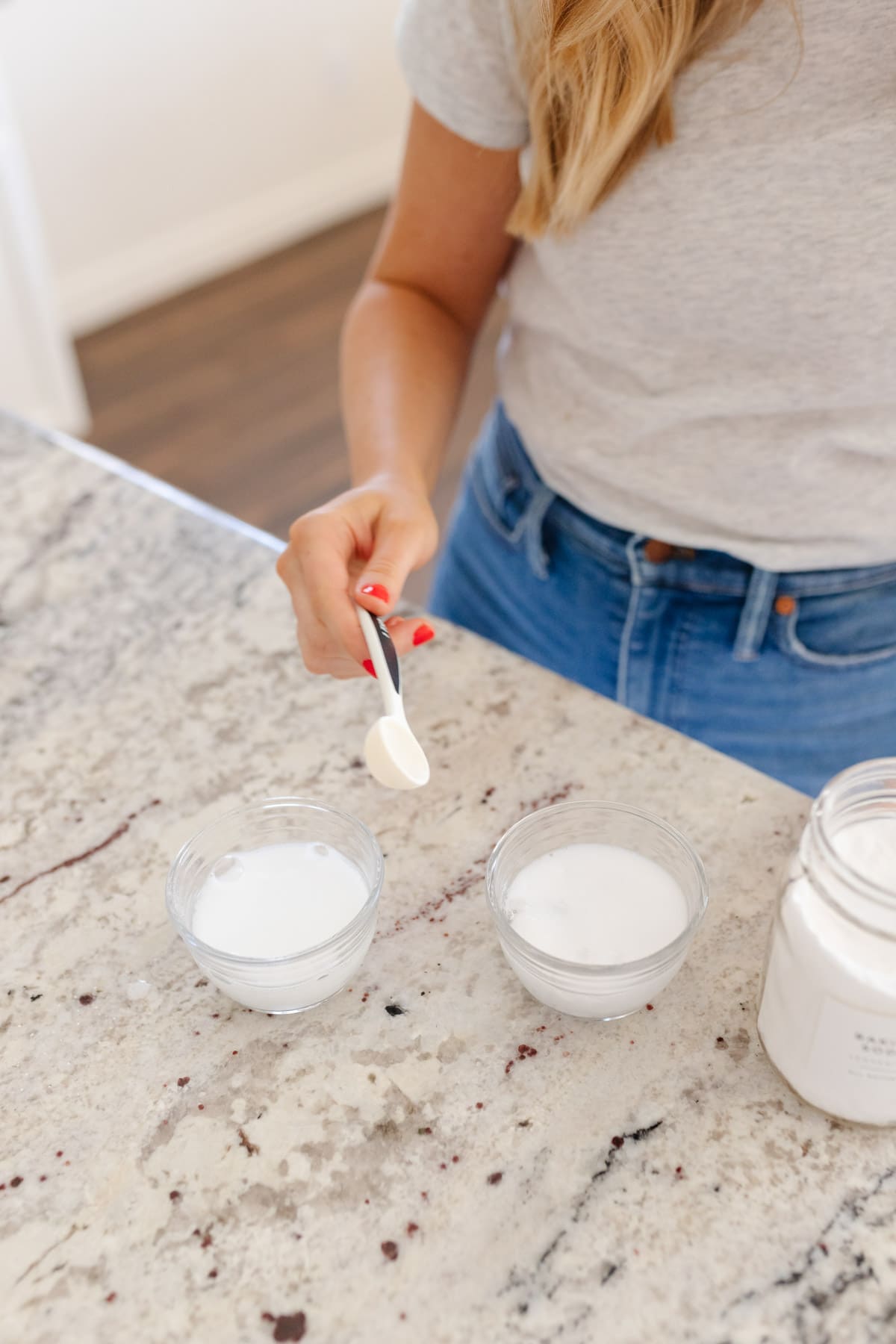
Baking Soda & Baking Powder Substitutions
What’s a good substitute for baking powder? You can make your own baking powder by combining 2 parts cream of tartar + 1 part baking soda + 1 part arrowroot or cornstarch. (So, for 1 teaspoon baking powder, you’d use 1/2 teaspoon cream of tartar, 1/4 teaspoon baking soda, and 1/4 teaspoon cornstarch or arrowroot.)
What’s a good substitute for baking soda? There really isn’t one. I’m sorry! Baking soda is unique from most other baking agents and is 3-4x as powerful as baking powder.
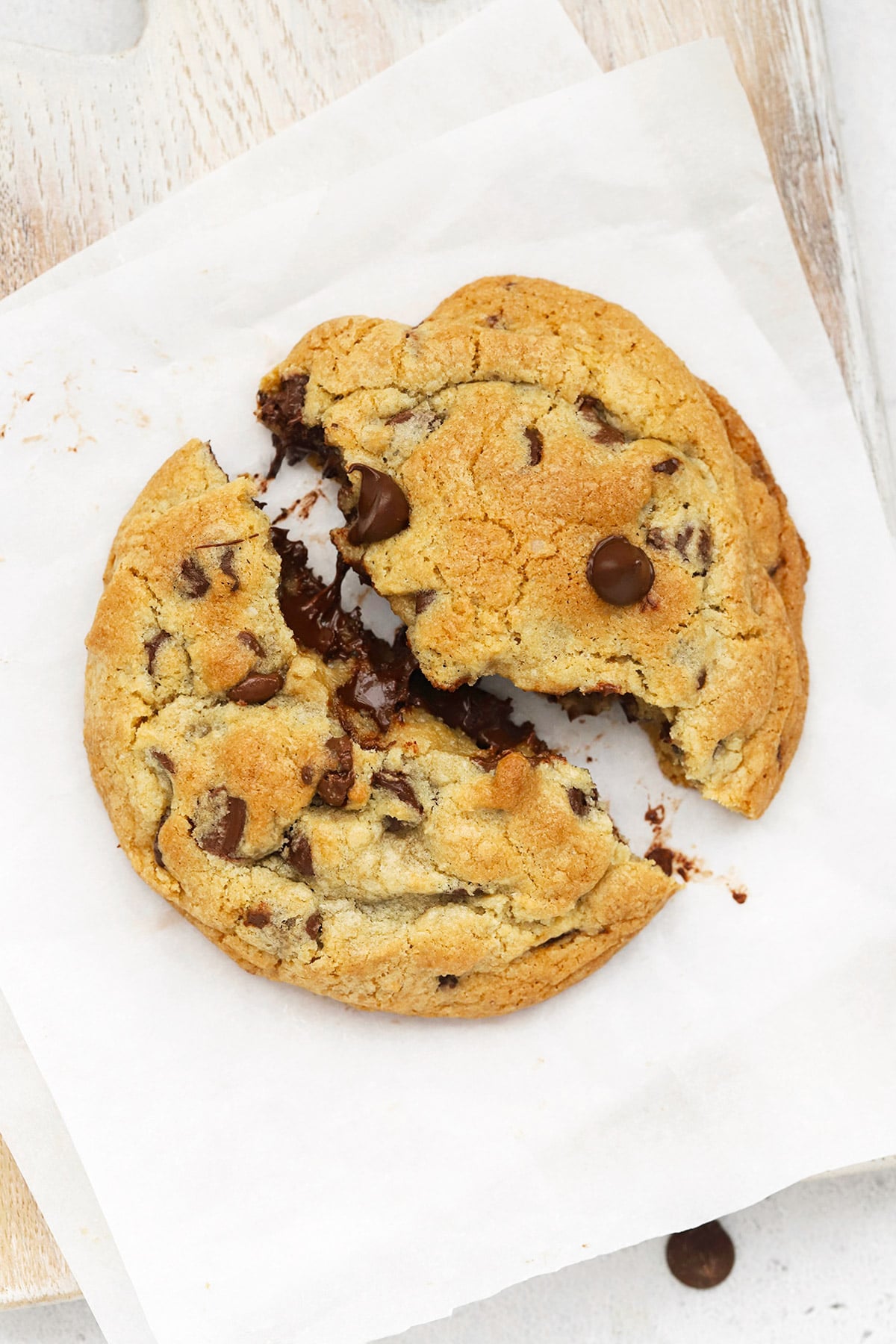
FAQ: Baking Soda & Baking Powder
What’s The Best Way To Store Baking Soda & Baking Powder? Store your baking powder and baking soda in airtight containers in a cool, dry place, ideally with less light exposure, such as in a cupboard or pantry. This means transferring your baking soda from the always-opened box it comes in to an airtight jar or container for best results.
Can You Still Use Expired Baking Powder & Baking Soda? Not for baking. Expired baking soda or inactive baking powder will no longer react properly in your recipes. This means your cakes won’t rise, your cookies won’t spread, and your baked goods will end up tough and dense. You *can* still use inactive baking soda to scrub things (the abrasive qualities will still work). Expired baking powder is best disposed of.
How Much Baking Powder & Baking Soda To Use Per Cup Of Flour: Depending on the ingredients in your recipe (and how much acid is present), you’ll need to adapt the amounts, but a general rule of thumb is:
- 1 teaspoon baking powder per 1 cup of flour.
- 1/4 teaspoon baking soda per 1 cup of flour.
Do brand names matter? What brand of baking powder is best? I haven’t noticed a particular difference brand to brand. I prefer to buy aluminum-free baking powder when possible, so Trader Joe’s, Rumford, Bob’s Red Mill, and Thrive Market are some brands I like. (TJ’s & Thrive are the best price!)
What brand of baking soda is best? Again, you won’t see a lot of variability in how well baking soda works, brand to brand. Good ol’ Arm & Hammer is inexpensive & widely available, but Trader Joe’s, Bob’s Red Mill, and Thrive Market are other great options.
WE ♥

